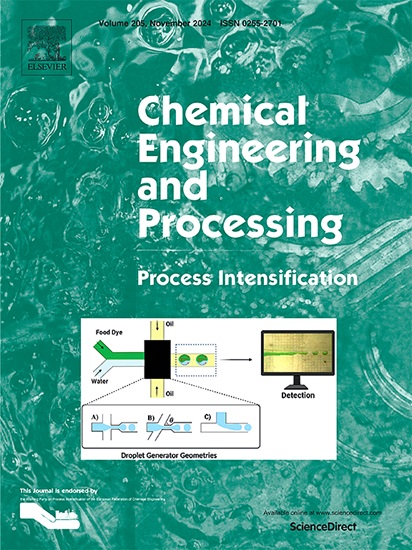Mononitration of N-(4-Methoxyphenyl)acetamide in continuous-flow: Kinetics study and process optimization
IF 3.8
3区 工程技术
Q3 ENERGY & FUELS
Chemical Engineering and Processing - Process Intensification
Pub Date : 2025-02-01
DOI:10.1016/j.cep.2024.110136
引用次数: 0
Abstract
Mononitration products of N-(4-Methoxyphenyl)acetamide (NMA) are intermediates of various mature products. However, for the nitration of NMA, N-(4-methoxy-2-nitrophenyl)acetamide (2-NMA) and N-(4-methoxy-3-nitrophenyl) acetamide (3-NMA) will be produced at the same time, making it difficult to control the selectivity of single nitration product, and no kinetics study has ever been reported before. To comprehend the high regioselectivity nitration of NMA more deeply, a microfluidic system was developed to evaluate the reaction kinetics of NMA nitration. At first, two different systems for nitration were identified. Then, the kinetics parameters for these two systems were determined. Next, a series of validation experiments were designed to show the accuracy of the kinetic model. In the end, to obtain a controlled selectivity, the effects of reaction temperature, initial concentration and molar ratio were investigated through the model simulation. Under the conditions optimized by the kinetic model, the selectivity for both 2-NMA and 3-NMA could achieve above 99.5 %, but due to the changes in the properties of the reaction solution, it was extremely difficult to achieve in practice. Ultimately, within the feasibility range of the kinetic model, 98.4 % selectivity of 2-NMA and 96.1 % selectivity of 3-NMA were obtained in the microreactor, respectively.

求助全文
约1分钟内获得全文
求助全文
来源期刊
CiteScore
7.80
自引率
9.30%
发文量
408
审稿时长
49 days
期刊介绍:
Chemical Engineering and Processing: Process Intensification is intended for practicing researchers in industry and academia, working in the field of Process Engineering and related to the subject of Process Intensification.Articles published in the Journal demonstrate how novel discoveries, developments and theories in the field of Process Engineering and in particular Process Intensification may be used for analysis and design of innovative equipment and processing methods with substantially improved sustainability, efficiency and environmental performance.

 求助内容:
求助内容: 应助结果提醒方式:
应助结果提醒方式:


